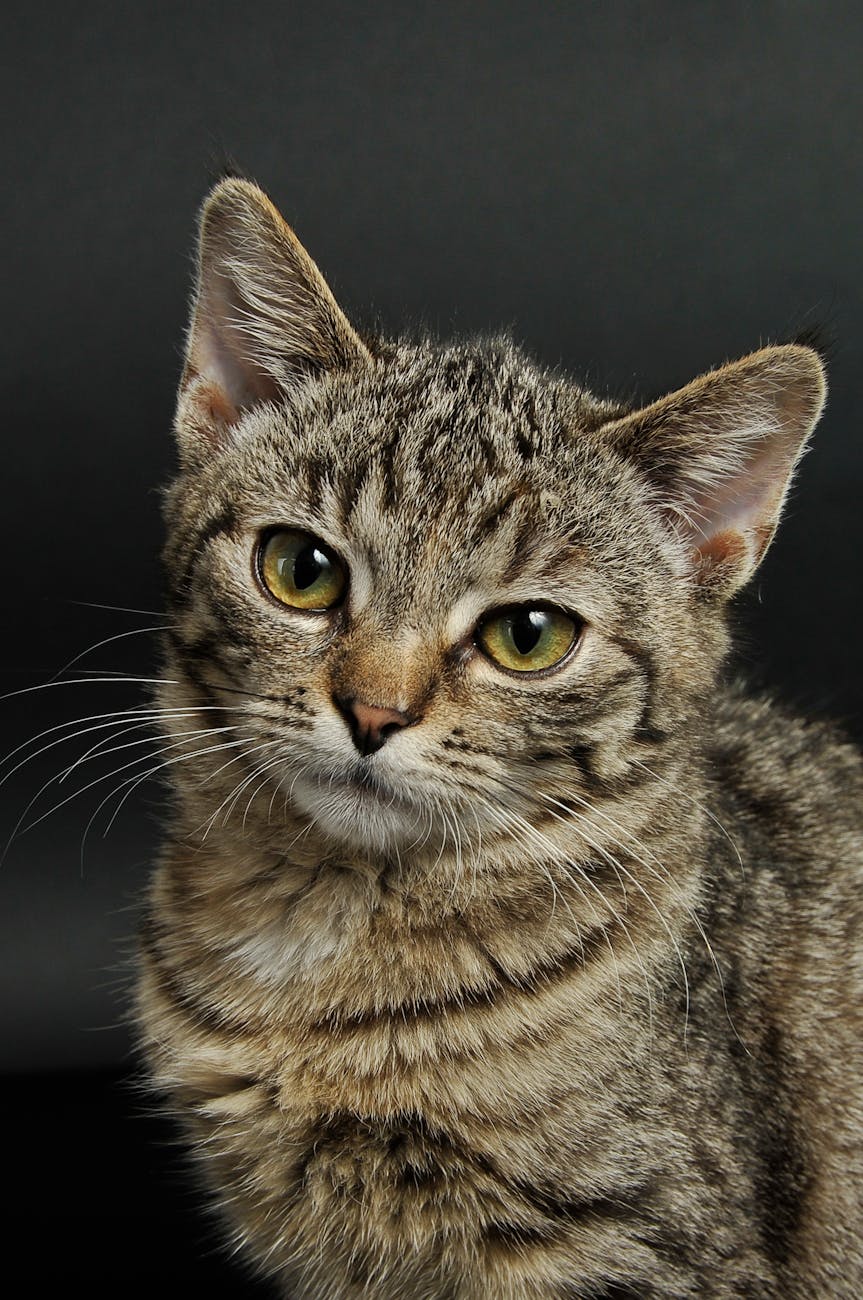Cats have long captivated humans with their mysterious and elusive nature. Yet, one fascinating aspect often remains a mystery itself: can cats see red? Understanding feline vision opens up a world of insights into how our furry companions perceive their surroundings. With unique eye anatomy and a different emotional palette than humans, cats experience a color spectrum that challenges conventional assumptions. As we explore the science behind cat vision, prepare to uncover the truth about their ability to see colors and learn how these insights can enhance the care we provide for our beloved pets.
Understanding Feline Vision
Feline vision is a fascinating and complex topic. Unlike humans, cats experience the world through a unique visual perspective, shaped by their evolutionary needs. Here are some key aspects to consider:
Color Perception: Cats are not completely colorblind but see a limited color spectrum. Research suggests they primarily perceive shades of blue and green. This leads many to wonder, can cats see red? The answer remains a topic of debate, but it appears their ability to distinguish red hues is significantly less than humans.
Night Vision: One of the standout features of cat vision is their superior ability to see in low light. Their eyes contain a higher number of rod cells, which enhances their night vision. In fact, cats can see in light levels six times lower than what humans can perceive.
Field of Vision: Cats also benefit from a wider field of view—approximately 200 degrees compared to the human’s 180 degrees. This allows them to be more aware of their surroundings, which is crucial for hunting.
Understanding these differences not only answers the question of can cats see red? but also illustrates how their vision supports their predatory lifestyle.

The Anatomy of a Cat’s Eye
To understand how cats perceive colors, it’s essential to explore the unique anatomy of a cat’s eye. While similar to human eyes, there are distinct differences that play a crucial role in their vision.
Key Features of a Cat’s Eye:
- Larger Cornea and Pupil:
Cats have larger corneas and pupils, allowing them to capture more light, which is vital for their crepuscular lifestyle. - Tapetum Lucidum:
This reflective layer behind the retina enhances low-light vision. It enables cats to see well in the dark, but it also affects their color perception. - Rods and Cones:
Feline eyes contain more rod cells than cone cells. While rods facilitate night vision, cones are responsible for color detection; thus, this balances their overall vision capabilities.
Color Perception:
Now, considering the anatomy, one might wonder, can cats see red? Cats mostly see shades of blue and green, while reds appear more muted. This limited color range stems from having only two types of cone cells compared to three in humans.
In summary, understanding a cat’s eye anatomy reveals why can cats see red and their color vision differs significantly from ours.
How Cats Perceive Colors
Understanding how cats perceive colors reveals fascinating differences between their vision and ours. Can cats see red? The answer is more nuanced than a simple yes or no.
Key Points About Feline Color Vision:
Limited Color Range:
- Cats primarily see shades of blue and green.
- They have difficulty distinguishing between reds and pinks, which may appear more like gray or brown to them.
Rods vs. Cones:
- Rods: These cells excel in low light, making cats great at night vision.
- Cones: Cats possess fewer cone cells than humans. While humans have three types (red, green, blue), cats rely mainly on blue and green cones.
Comparison Table: Human vs. Cat Color Perception
| Color | Human Vision | Cat Vision |
|---|---|---|
| Red | Vibrant and distinct | Dull or grayish |
| Green | Bright and vivid | Bright, but less vivid |
| Blue | Bright and distinct | Bright and distinct |
| Yellow | Bright | Dull |
In summary, while cats can see some colors, they struggle with red, leading to the conclusion that their world is less colorful than ours. So, the question remains: can cats see red? The answer is no, at least not in the vibrancy that we do.
Differences Between Human and Cat Vision
Understanding the differences in vision between humans and cats offers fascinating insights into how these two species perceive the world. While both humans and cats have eyes equipped to process visual information, several key distinctions set them apart:
Color Perception: Humans typically possess three types of cone cells, allowing us to see a wide spectrum of colors, including red, green, and blue. In contrast, cats have only two types of cones, meaning they are more similar to color-blind humans. So, can cats see red? Unfortunately, our feline friends struggle to perceive this color in the same way humans do.
Night Vision: Cats excel in low-light conditions, thanks to a higher number of rod cells in their retinas. This adaptation allows them to see well in the dark. Humans, however, rely more heavily on cone cells, which perform better in bright light.
Field of View: Cats enjoy a broader field of vision (about 200 degrees) compared to humans (roughly 180 degrees). This advantage helps cats detect movement quickly, which is crucial for their hunting instincts.
Overall, these differences highlight how cats uniquely experience their environment, particularly regarding color perception, reinforcing the question: Can cats see red? The answer remains a resounding no!

The Role of Rods and Cones in Vision
When exploring the question, "can cats see red?", understanding the roles of rods and cones in a cat’s eyes is crucial. These photoreceptor cells act differently, affecting how cats perceive colors.
Rods vs. Cones:
Rods:
- Highly sensitive to light; enable vision in low-light conditions.
- Cats have approximately 6 to 8 times more rods than humans, making them excellent night hunters.
Cones:
- Responsible for color perception and detail.
- Cats possess fewer cones—about 25% of the number found in humans. This limitation influences their color vision.
Color Spectrum:
| Color | Humans | Cats |
|---|---|---|
| Red | Seen | Poorly perceived |
| Green | Seen | Seen as a dull shade |
| Blue | Seen | Easily distinguished |
Thus, while we might enjoy a vibrant red, cats likely see it as a dull gray or brown. This further emphasizes that can cats see red? The answer leans toward a definite "no," as their vision primarily encompasses shades of blue and green. Understanding this can help cat owners choose enriching toys and environments that cater to their feline friends’ visual strengths.
Common Misconceptions About Cat Vision
Many people hold misconceptions about how cats perceive their world, particularly when it comes to color vision. Let’s clear up some of these misunderstandings:
Misconception 1: Cats see only in black and white.
Contrary to popular belief, cats can see some colors. Although their spectrum is limited compared to humans, they can perceive blue and yellow hues.Misconception 2: Cats can see red like humans do.
The simple answer to the question, "can cats see red?" is no. Cats have fewer cone cells responsible for color vision, which means they likely confuse reds with darker shades.Misconception 3: All cats see the same way.
Just like humans, individual cats can vary in vision quality due to age, health, and genetics, causing differences in how they perceive color.
Understanding these misconceptions helps cat owners better appreciate their pet’s unique vision. By knowing what cats can see, you can choose toys, decorations, and other visual stimuli that enhance their environment and overall well-being.
What does Science say about Cats Seeing Red?
When exploring the question, can cats see red, science provides intriguing insights. Cats possess fewer cone cells—responsible for color vision—compared to humans. Here’s a breakdown of the key findings:
Color Perception:
- Humans have three types of cone cells, allowing us to perceive a broad spectrum of colors, including reds and greens.
- Cats, on the other hand, primarily see in shades of blue and green, indicating they struggle to distinguish between reds and some shades of yellow.
Research Findings:
- Studies suggest that the wavelengths of red light may appear grayish or darkish to cats. They may not recognize red as a distinct color, leading to the conclusion that cats see red differently than humans.
Practical Implications:
- While this doesn’t impair their ability to manage their environment, it impacts toy choices and visual interactions.
- Selecting toys in blue or green hues may engage them more effectively.
In essence, can cats see red? The evidence suggests they cannot perceive it in the same vibrant way that humans do, which may adjust how we interact with our feline friends.

Implications for Cat Owners and Caregivers
Understanding whether can cats see red influences how owners select toys, environments, and enrichment activities. While cats primarily perceive shades of blue, yellow, and gray, their limited ability to see red means that:
- Toy Selection: Choose brightly colored toys in blue or yellow. This enhances engagement and encourages play.
- Safety Measures: Avoid using red labels or objects that may not stand out to your cat, as it can pose hazards if they cannot see them.
- Environmental Enrichment: When designing play areas, incorporate contrasting colors that capture your cat’s visual attention, enhancing their overall experience.
Here’s a quick comparison:
| Color | Perceived by Cats | Perceived by Humans |
|---|---|---|
| Red | No | Yes |
| Blue | Yes | Yes |
| Yellow | Yes | Yes |
| Green | Minimal | Yes |
By acknowledging that can cats see red, caregivers can provide a visually stimulating environment tailored to their feline friends’ unique sight capabilities, promoting their health and happiness.
Frequently Asked Questions
Can cats see colors like humans do?
Cats have a different visual perception compared to humans, primarily due to the structure of their eyes. While humans possess three types of cone cells for color vision and can see a wide range of colors, cats have only two types of cones. This means cats are thought to see primarily in shades of blue and green, but they are less sensitive to variations in red and orange hues, making their color vision more limited.
What colors are cats unable to see?
Cats are believed to have difficulty seeing red and pink, as their two types of cone cells do not effectively register these colors. Consequently, colors that fall into these categories may appear gray or muted to them. In contrast, they can distinguish between various shades of blue and green, indicating that their color recognition is somewhat similar to that of colorblind humans.
How does a cat’s vision help them as hunters?
A cat’s vision is specially adapted for low-light conditions, making it highly effective for hunting, particularly during dawn and dusk when their prey is most active. Their eyes contain a high number of rod cells, which are sensitive to light but do not detect color. This adaptation allows cats to excel in dim environments, catching even the smallest movements, which is essential for stalking and capturing prey.
Do cats see the world differently than dogs?
Yes, cats and dogs perceive the world quite differently due to variations in their eye structure and visual systems. While dogs have a limited ability to see colors, similar to cats, they are more sensitive to movement and have superior night vision. In contrast, cats excel in detecting slight movements thanks to their highly developed night vision and enhanced ability to see in darker environments, reflecting their evolutionary background as solitary hunters.



